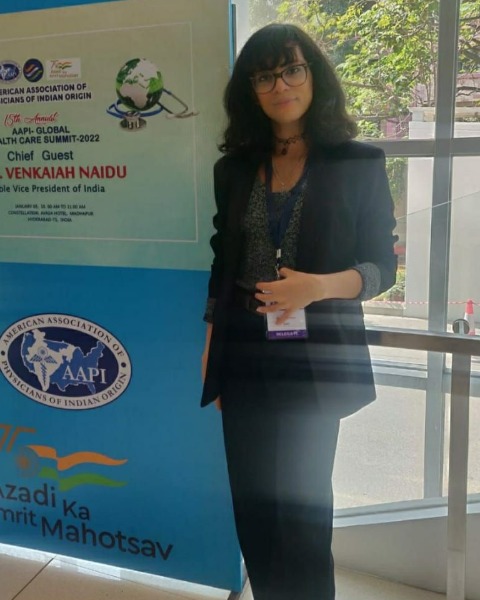Oncology
Treating High cervical spine lesions with Gamma knife Radiosurgery (GKRS): A Single center Experience of 10 years
Friday, February 21, 2025
7:00 AM - 2:00 AM EST

Bhavya Pahwa, MBBS
Med Student
UCMS and GTB Hospital
Amritsar, IN
Presenting Author(s)
Introduction: The foramen magnum has been defined traditionally as the lower limit for treating lesions with GKRS. However, its scope can be expanded to lesions till the spinal level of C3. We recorded the effect of GKRS over the high cervical spinal cord lesions (C1-C2).
Methods: A retrospective study was carried out over a 10-year period (January 2014-Dec 2023). All high cervical spinal lesion patients treated by the senior author (DA) were included in the study. The procedure was performed using Leksell GK Icon model. Neck immobility was achieved with a hard Philadelphia collar application. Pre procedural MRI was done in all cases and follow up MRI was performed every yearly after GKRS
Results: Nine patients with 11 lesions were treated in the study period. The age ranged from 13-59 years.There were 6 males and 5 female patients. 4patients had schwannomas, 3meningiomas, 1chondroblastoma and 1hemangioblastoma. 7patients underwent primary GKRS and 2 underwent surgical removal prior to GKRS.Four patients had lowest level of lesion at C1 level, 4 at C2 level while one patient had lesion extending till C3 level.One patient had 3 lesions at C1-C2 level,each of them targeted for radiosurgery. The mean maximal dose was 26.5Gy and the mean median marginal dose was 13.3Gy. Six patients had follow up available and it was pending for three patients. The mean follow-up was 52.8 months. There was no treatment related acute mortality or morbidity.All the 8 lesions on follow up had reduction in size on follow up MRI with mean percentage reduction of 24.2 % and 4 lesions achieving more than 25% decrease. No patient developed clinical symptom suggestive of radiation induced myelitis nor had spinal cord signal changes suggestive of the same.
Conclusion : GKRS can be used as an effective method to treat high cervical spine lesions especially in patients with meso or brachycephalic skulls. The lower limit of treatment can be further extended to lower C3 level with the insertion of frame at maxillary level. The method appears to be overall safe and can be used for patients in whom concomitant GKRS for intracranial lesions is being given or surgical treatment may prove risky.
Methods: A retrospective study was carried out over a 10-year period (January 2014-Dec 2023). All high cervical spinal lesion patients treated by the senior author (DA) were included in the study. The procedure was performed using Leksell GK Icon model. Neck immobility was achieved with a hard Philadelphia collar application. Pre procedural MRI was done in all cases and follow up MRI was performed every yearly after GKRS
Results: Nine patients with 11 lesions were treated in the study period. The age ranged from 13-59 years.There were 6 males and 5 female patients. 4patients had schwannomas, 3meningiomas, 1chondroblastoma and 1hemangioblastoma. 7patients underwent primary GKRS and 2 underwent surgical removal prior to GKRS.Four patients had lowest level of lesion at C1 level, 4 at C2 level while one patient had lesion extending till C3 level.One patient had 3 lesions at C1-C2 level,each of them targeted for radiosurgery. The mean maximal dose was 26.5Gy and the mean median marginal dose was 13.3Gy. Six patients had follow up available and it was pending for three patients. The mean follow-up was 52.8 months. There was no treatment related acute mortality or morbidity.All the 8 lesions on follow up had reduction in size on follow up MRI with mean percentage reduction of 24.2 % and 4 lesions achieving more than 25% decrease. No patient developed clinical symptom suggestive of radiation induced myelitis nor had spinal cord signal changes suggestive of the same.
Conclusion : GKRS can be used as an effective method to treat high cervical spine lesions especially in patients with meso or brachycephalic skulls. The lower limit of treatment can be further extended to lower C3 level with the insertion of frame at maxillary level. The method appears to be overall safe and can be used for patients in whom concomitant GKRS for intracranial lesions is being given or surgical treatment may prove risky.

.jpg)